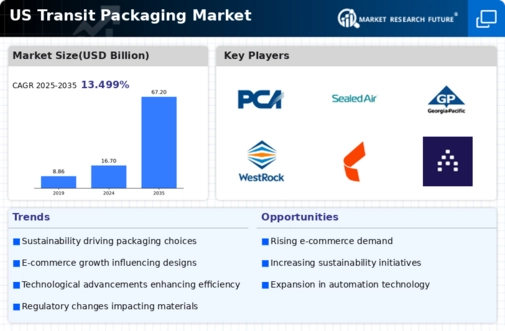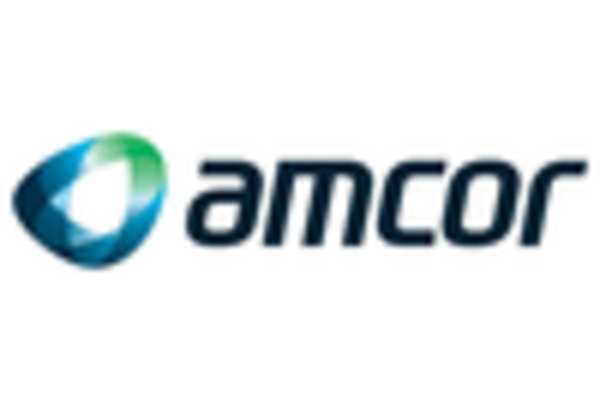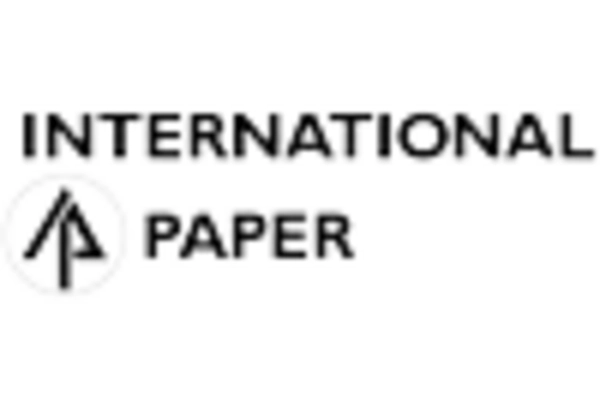Rising Demand for E-commerce
The surge in e-commerce activities has notably influenced the transit packaging market. As online shopping continues to gain traction, the need for efficient and protective packaging solutions has escalated. In 2025, e-commerce sales in the US are projected to reach approximately $1 trillion, driving the demand for innovative transit packaging solutions that ensure product safety during shipping. This trend compels manufacturers to develop packaging that is not only durable but also lightweight, thereby reducing shipping costs. The transit packaging market is adapting to these changes by offering customized solutions that cater to the specific needs of e-commerce businesses, enhancing customer satisfaction and retention.
Focus on Supply Chain Efficiency
The emphasis on optimizing supply chain operations is a critical driver for the transit packaging market. Companies are increasingly seeking ways to streamline their logistics and reduce operational costs. Efficient packaging plays a vital role in this endeavor, as it can minimize waste and enhance the speed of product delivery. In 2025, it is estimated that logistics costs in the US will account for about 8% of the GDP, highlighting the importance of effective transit packaging solutions. The transit packaging market is responding by innovating packaging designs that facilitate easier handling and storage, ultimately contributing to improved supply chain efficiency.
Regulatory Compliance and Safety Standards
The transit packaging market is significantly influenced by stringent regulatory requirements and safety standards. Companies must adhere to various regulations concerning packaging materials and product safety, which can vary by industry. In 2025, the US is expected to see an increase in regulations aimed at reducing environmental impact, compelling businesses to adopt sustainable packaging practices. This regulatory landscape drives the transit packaging market to innovate and develop compliant packaging solutions that not only meet safety standards but also align with environmental goals, thereby enhancing brand reputation and consumer trust.
Technological Integration in Packaging Solutions
The integration of advanced technologies in packaging solutions is reshaping the transit packaging market. Innovations such as smart packaging, which incorporates sensors and tracking capabilities, are becoming increasingly prevalent. These technologies enhance the ability to monitor product conditions during transit, ensuring quality and safety. In 2025, the market for smart packaging is projected to grow at a CAGR of over 15%, indicating a strong shift towards technology-driven solutions. The transit packaging market is leveraging these advancements to provide enhanced visibility and control throughout the supply chain, ultimately benefiting both manufacturers and consumers.
Sustainability Initiatives and Consumer Preferences
Consumer preferences are shifting towards sustainable practices, significantly impacting the transit packaging market. As awareness of environmental issues grows, consumers are increasingly favoring brands that prioritize eco-friendly packaging solutions. In 2025, it is estimated that over 70% of consumers in the US are willing to pay a premium for sustainable packaging options. This trend compels the transit packaging market to innovate and offer biodegradable, recyclable, and reusable packaging materials. By aligning with consumer values, companies can enhance their market position and foster brand loyalty, ultimately driving growth in the transit packaging market.

















Leave a Comment